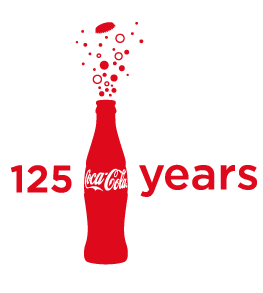Branding and brand management are important topics in the marketing sector. Having vision of what your brand conveys will make it so much easier for you to plan a coherent marketing strategy to achieve the desired results.
Sometimes, the concepts of "brand" and "branding" can be a bit confusing. What exactly is a brand? What is the difference between a brand and branding? What elements should you take into account to properly manage your brand? In this article, we will give you all the answers to these questions!

What Is a Brand?
To understand what makes a brand, it is important to understand the role that trademarks play. According to the Ministry of Industry, Commerce, and Tourism, a trademark is the sign that "distinguishes a company in the market." It is a distinctive sign and its function is to differentiate products or services on the market from other, similar products or services. It also identifies the origin of products and services and is an indicator of their quality.
The main function of trademarks is to identify and position companies. Brands have value in themselves, regardless of the product they represent.
When thinking about the concept of a brand, usually the first thing that comes to mind is the name of the company or even the logo, but the truth is that there are many different types of brands. Check out the examples below:
- Wordmarks: a name consisting of a combination of letters and numbers
- Graphic marks: symbols, logos, drawings, and other graphic elements associated with the mark
- Mixed or figurative marks: these combine letters, numbers, and graphic symbols. For example, think of Coca-Cola's brand with its classic typography of white letters on a red background. For its 12th anniversary, Coke included numbers in its logo.

- Three-dimensional marks: the graphic elements are arranged in three dimensions through the shape of the product or its packaging.
- Sound marks: consist of a series of distinctive sounds like a jingle.
All of these elements help define what a brand is but, in the marketing world, a brand is much more than that. From a marketing point of view, you should consider your brand from different perspectives such as:
- Your brand shapes how your company is perceived. If you manage these characteristics correctly, your product or company will be perceived as unique and valuable.
- Externally, the brand is everything that consumers think, say, feel, and share about a company or its products.
-
Internally, the brand is an expression of a company's mission and its commitment to different stakeholders, for example, employees and customers.
What Is Branding?
Branding is a marketing discipline that helps define and manage a brand over time. It is used to build brands and manage their tangible and intangible elements, including everything from values to typography.
To understand branding, you must remember that brands are not static. If you look at companies that have been around for many years, you see that their logos and typography have evolved over time. Similarly, the more intangible aspects of a brand also change to adapt to social realities and consumer preferences.
Branding is one of the crucial pillars on which a company's marketing strategy should be based. If you have a well-defined brand, it will be easier to align your actions and communications to deliver a consistent customer experience across all of your channels.
Proper branding management is essential to differentiate your company from the competition. Moreover, by conveying brand values and evoking emotions in consumers, branding creates a bond with potential customers and facilitates brand recall.
Key Elements of Brand Management
-
Promise: In essence, all brands are based on offering something unique to consumers. For example, Nike promises to provide inspiration and innovation to every athlete in the world. In order to not arouse skepticism, your brand's promise has to be backed up by solid evidence.
-
Community: The strongest brands manage to make consumers forget about rational purchasing decisions and invest thousands of dollars to feel part of a community. For example, Peloton, an American fitness company, emphasizes creating a community of athletes through virtual group classes.
-
Consistency: To properly manage your branding, all of the marketing actions carried out by your company must be aligned with your brand. This generates a perception of alignment for consumers and is where corporate identity comes into play. Brands that have customer-facing employees must train them to represent the brand through their interactions with their customers.
-
Adaptation: Although brands must be consistent over time, they must not remain static. They must be able to adapt to new realities to stay relevant to consumers. For example, in recent years, we have seen many brands incorporate LGBT elements into their company branding through special Pride Day campaigns.
-
Loyalty: In the end, proper brand management generates customer loyalty, as customers feel part of the brand and remain loyal for years. To achieve this, you must recognize, reward your customers and let them know that their opinion truly matters.
Inbound Marketing Strategist en Cyberclick. Especializado en HubSpot, lidera las estrategias de inbound marketing de los clientes de Cyberclick. Oier es un apasionado del marketing, la creatividad y el audiovisual y es licenciado en Bellas Artes con un máster en Artes Digitales.
Inbound Marketing Strategist at Cyberclick. He leads inbound marketing strategies for Cyberclick's clients, with experience in CRM management and HubSpot. Oier is passionate about marketing, creativity and audiovisual content and he holds a degree in Fine Arts with a master's degree in Digital Arts.






Leave your comment and join the conversation